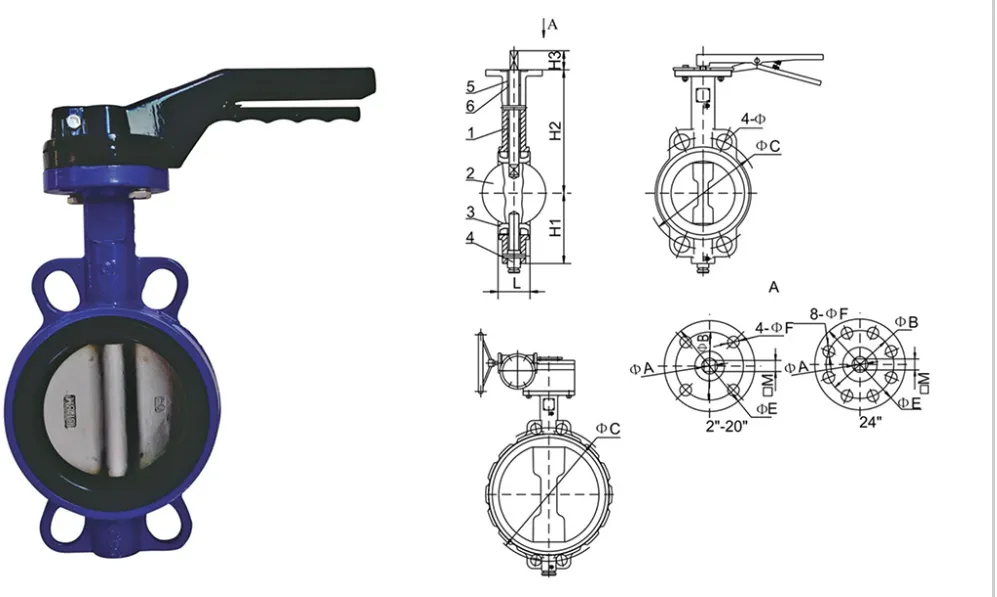12 月 . 13, 2024 13:18 Back to list
swing type check valve
Understanding Swing Type Check Valves A Comprehensive Overview
Swing type check valves are essential components in various piping systems, crucial for ensuring unidirectional flow and preventing backflow. These valves are particularly favored in numerous industries, including water treatment, oil and gas, and power generation, due to their simplicity and effectiveness.
What is a Swing Type Check Valve?
A swing type check valve is a mechanical device designed to allow fluid to flow in one direction while providing a barrier against the reverse flow. The mechanism consists of a disk or flap that swings away from the valve seat to permit fluid passage and returns to its seat when the flow stops or reverses, creating a seal that prevents backflow.
Design Features and Operation
Swing check valves are typically made from various materials such as cast iron, stainless steel, and plastic, depending on the application and the type of fluid being conveyed. The most common design includes a hinged disk that opens with the flow of fluid, utilizing gravity and fluid pressure to return to a closed position.
The operation of a swing check valve is relatively straightforward. When the pressure of the incoming fluid exceeds the pressure in the downstream piping, the disk swings open, allowing the fluid to flow through. Once the flow stops or reverses, the disk swings back to its original position, sealing the valve and preventing any backflow. This automatic operation is highly effective for protecting downstream equipment and preventing contamination.
Advantages of Swing Type Check Valves
1. Low Pressure Drop Swing type check valves exhibit a low-pressure drop across the valve compared to other check valve types, such as lift check valves. This characteristic results in increased efficiency and reduced energy costs in fluid systems.
swing type check valve

2. Simple Design The uncomplicated design of swing check valves leads to easier installation and maintenance. Fewer moving parts result in lower chances of mechanical failure, making these valves reliable choices for many applications.
3. Versatility Swing check valves are versatile and can be used in a wide range of applications, including water and wastewater systems, cooling water applications, and various industrial processes. Their adaptability makes them suitable for different media, including liquids and some gases.
4. Durability With proper material selection and maintenance, swing check valves can offer long operational lifetimes. Their robust construction enables them to withstand harsh conditions and high-pressure environments, ensuring they remain operational even in demanding applications.
Applications
Swing type check valves find extensive use in several sectors, including
- Water and Wastewater Management They are commonly used in municipal water systems and sewage treatment plants to prevent backflow and protect pumps and other equipment. - Oil and Gas Industry In pipelines transporting crude oil and natural gas, swing check valves help safeguard against reverse flow, which can lead to contamination and process disruptions. - HVAC Systems Swing check valves are utilized in heating, ventilation, and air conditioning systems to regulate flow and prevent backflow, ensuring system efficiency. - Power Generation They are used in various cooling and feedwater systems, playing a critical role in maintaining system integrity and operational reliability.
Conclusion
Swing type check valves are crucial components in many fluid systems, offering a combination of functionality, simplicity, and reliability. Their ability to ensure unidirectional flow while preventing backflow makes them indispensable in a variety of applications. Understanding the design, operation, and applications of swing type check valves can help engineers and operators make informed decisions about their use in piping and fluid handling systems. As industries continue to evolve and demand for efficient fluid management solutions increases, the significance of swing check valves in maintaining operational integrity cannot be overstated.
Share
-
Understanding the Differences Between Wafer Type Butterfly Valve and Lugged Butterfly ValveNewsOct.25,2024
-
The Efficiency of Wafer Type Butterfly Valve and Lugged Butterfly ValveNewsOct.25,2024
-
The Ultimate Guide to Industrial Swing Check Valve: Performance, Installation, and MaintenanceNewsOct.25,2024
-
Superior Performance with Industrial Swing Check Valve: The Essential Valve for Any SystemNewsOct.25,2024
-
Industrial Swing Check Valve: The Ideal Solution for Flow ControlNewsOct.25,2024
-
You Need to Know About Industrial Swing Check Valve: Functionality, Scope, and PerformanceNewsOct.25,2024